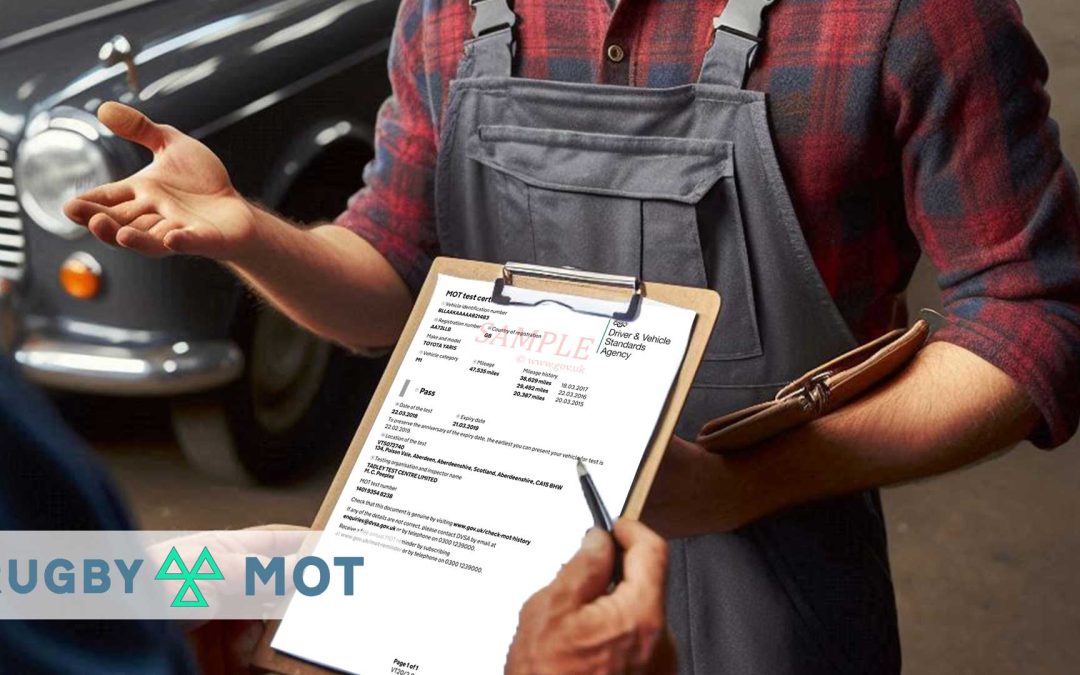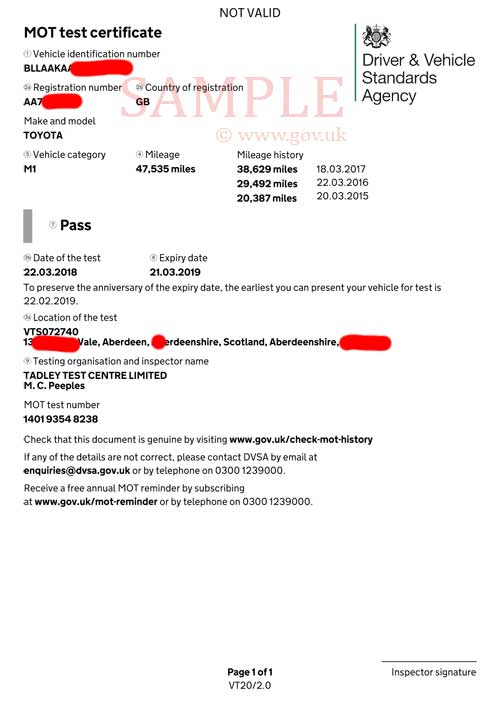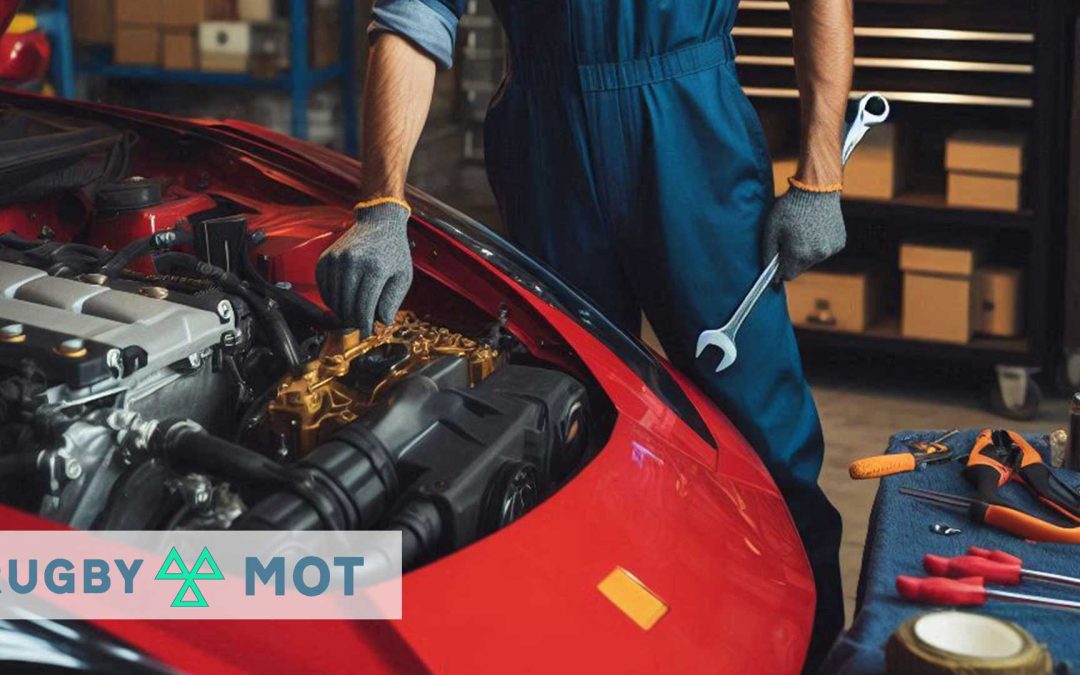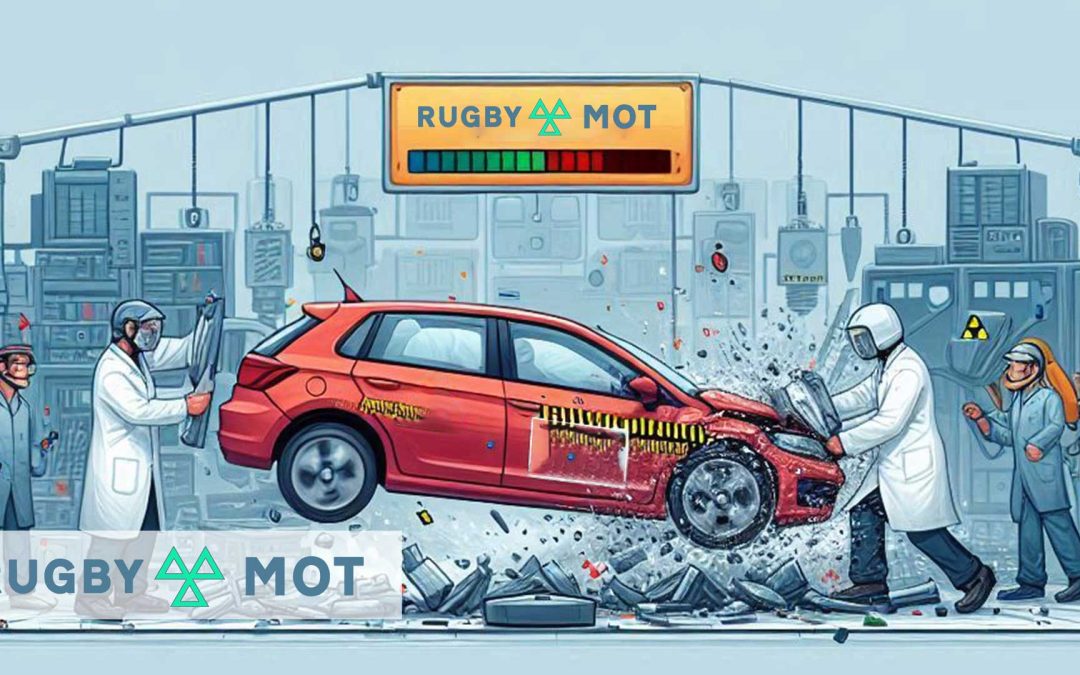
Rugby MOT
### How to Prepare Your Car for MOT Testing
Preparing your car for its MOT test is crucial. It ensures your vehicle is roadworthy and meets legal standards. Here’s a comprehensive guide on how to prepare your car for the MOT test.
**1. Understand the MOT Requirements**
Familiarize yourself with the MOT requirements. Knowing what will be tested helps you prepare better. The test covers various aspects of vehicle safety, emissions, and overall condition.
**2. Check Your Lights**
Ensure all lights are working properly. This includes headlights, indicators, brake lights, and reverse lights. Replace any bulbs that are not functioning. Check both dipped and full beam settings.
**3. Inspect the Tyres**
Check the tread depth on all tyres. It should be at least 1.6mm across the central three-quarters. Ensure there are no cuts, bulges, or other damage. Proper tyre pressure is also essential for the test.
**4. Test Your Brakes**
Make sure your brakes are functioning effectively. Test both the foot brake and the handbrake. Listen for any unusual noises. If the brakes feel spongy, get them checked by a professional.
**5. Clean Your Car**
A clean car makes a good impression. It also allows the tester to see clearly. Clean the windows, mirrors, lights, and number plates.
**6. Check the Windscreen**
Inspect your windscreen for any cracks or chips. Damage larger than 10mm in the driver’s line of sight can fail the test. Ensure your wipers are in good condition and replace them if necessary.
**7. Ensure Proper Visibility**
Make sure all mirrors are securely attached and undamaged. Check the rear-view mirror and side mirrors. Visibility is crucial for passing the MOT.
**8. Test the Horn**
Your horn must be loud and clear. Press the horn and listen for a strong, consistent sound. If it’s weak or not working, get it fixed before the test.
**9. Check the Exhaust System**
Inspect the exhaust for leaks or excessive noise. A noisy or damaged exhaust can fail the test. Make sure the emissions are within the acceptable limits.
**10. Secure Seats and Seatbelts**
Ensure all seats are securely fitted. Check that all seatbelts are working properly. They should clip in securely and retract fully.
**11. Verify Registration Plates**
Ensure your registration plates are clean and readable. The font should be the correct size and style. Plates should not be cracked or broken.
**12. Check Fluid Levels**
Top up all essential fluids. This includes engine oil, brake fluid, coolant, and windscreen washer fluid. Low fluid levels can cause a failure in the MOT.
**13. Inspect Suspension**
Check for any signs of wear in the suspension. Look for leaks from shock absorbers. If you hear any knocking noises, get the suspension checked by a mechanic.
**14. Test the Steering**
Ensure your steering is responsive and smooth. There should be no excessive play or stiffness. Listen for any unusual sounds when turning the wheel.
**15. Examine the Battery**
Check the battery terminals for corrosion. Ensure the battery is securely mounted. A weak battery can cause starting issues during the test.
**16. Verify Warning Lights**
Make sure no warning lights are illuminated on the dashboard. Common warning lights include the check engine light and ABS light. Address any warning lights before the MOT.
**17. Test Emissions**
Ensure your car passes the emissions test. A recent service can help. Use high-quality fuel and consider a pre-MOT emissions check.
**18. Check Doors and Latches**
Ensure all doors open and close properly. Check that the latches are secure. Faulty doors can be a reason for failure.
**19. Inspect the Fuel System**
Check for any leaks or damage in the fuel system. Make sure the fuel cap seals properly. A secure fuel system is essential for passing the MOT.
**20. Assess the General Condition**
Look over the general condition of your car. Check for rust, sharp edges, and other potential hazards. Address any visible issues before the test.
**21. Consider a Pre-MOT Check**
A pre-MOT check can identify potential issues. Many garages offer this service. It helps address problems before the actual MOT.
**22. Prepare Documentation**
Ensure you have all necessary documentation. This includes your current MOT certificate and vehicle registration document (V5C). Keep these documents ready for the test.

Book your MOT test in advance. This allows time for repairs if your car fails. Avoid last-minute rush and potential fines.
**24. Address Known Issues**
Fix any known issues before the test. Even minor problems can cause a failure. It’s better to be proactive than reactive.
**25. Drive the Car Regularly**
Regular driving keeps your car in good condition. It prevents issues like flat batteries and seized brakes. Ensure your car is in regular use before the MOT.
**26. Warm Up the Engine**
A warm engine performs better in emissions tests. Drive your car for at least 20 minutes before the test. This ensures accurate results.
**27. Listen for Unusual Noises**
Pay attention to any unusual noises. Strange sounds can indicate underlying issues. Address these before the test.
**28. Seek Professional Help**
If unsure, seek help from a professional mechanic. They can perform a thorough check. Professional advice ensures your car is ready for the MOT.
**29. Keep Maintenance Records**
Maintain a record of all repairs and services. This helps track your car’s condition. Presenting these records can be beneficial during the MOT.
**30. Stay Calm and Confident**
Finally, stay calm and confident. Preparation ensures your car is in the best possible condition. Trust the process and be ready for the results.
### Conclusion
Preparing your car for the MOT test involves multiple steps. Each aspect, from lights to tyres, plays a crucial role. Regular maintenance and proactive checks can prevent failures. Understanding the requirements and addressing issues early helps ensure a smooth MOT experience. Follow this guide to ensure your car is roadworthy and compliant. A well-prepared car increases the chances of passing the MOT successfully.

Rugby MOT
### How to Read and Understand Your MOT Certificate in the UK
Passing your MOT test in the UK is a significant event for any car owner. Understanding your MOT certificate is crucial. This document proves your car’s roadworthiness at the time of the test. Here’s a comprehensive guide on how to read your MOT certificate and what to look out for.
1. **Check Your Car’s Details**:
Start by ensuring the make, model, and registration number of your car are correct. Any discrepancies here should be addressed immediately. The certificate’s accuracy is vital for legal and insurance purposes.
2. **Verify the Expiry Date**:
The MOT certificate will clearly state the expiry date. This date indicates when your next MOT is due. Mark this date on your calendar to avoid any lapses. Driving without a valid MOT can lead to fines and points on your license.
3. **MOT Test Number**:
Every MOT certificate has a unique test number. This number is essential for future reference. You will need it to check the MOT history of your vehicle online. Keep this number safe as it helps in verifying the authenticity of the certificate.

4. **Odometer Reading**:
The certificate includes the mileage recorded at the time of the test. Compare this reading with your car’s odometer. This check ensures there are no recording errors. Consistent mileage readings are crucial for maintaining the car’s value and history.
5. **Test Result**:
The most important part of the certificate is the test result. Ensure it says “PASS“. A pass indicates your vehicle met the required safety and environmental standards. If the result is anything other than pass, consult with your mechanic immediately.

6. **Advisory Notices**:
Pay close attention to any advisory notices. These notes highlight issues that might need future attention. They are not immediate failures but suggest areas that could become problematic. Address these advisories promptly to maintain your vehicle’s condition.
7. **Major Defects**:
If your car passed, there should be no major defects listed. Major defects indicate serious problems that require immediate repair. Even with a pass, it’s wise to fix these defects as soon as possible.
8. **Tester’s Signature**:
The certificate should include the signature of the authorized tester. This signature validates the certificate’s authenticity. If the signature is missing, the certificate might not be legitimate.
9. **Testing Station Details**:
The details of the testing station will be on the certificate. This includes the station’s name, address, and contact information. Knowing where the test was conducted is useful for any follow-up queries or complaints.
10. **Certificate Authenticity**:
Check for the official DVSA logo on the certificate. This logo ensures the certificate’s authenticity. Fake certificates are illegal and can result in severe penalties.
11. **Online Verification**:
You can verify the MOT certificate online using the test number. Visit the DVSA website for this verification. This step ensures the details on your certificate match the official records.
12. **Keep a Copy**:
Always keep a copy of your MOT certificate. Store it in a safe place, separate from your car. You will need it for tax renewals and insurance purposes. Digital copies are also useful in case the physical one gets lost.
13. **Plan for Maintenance**:
Use the advisory notes to plan any necessary maintenance. Addressing these issues early can prevent major problems. Regular maintenance keeps your car in top condition and ensures safety.
14. **Understand the Importance**:
An MOT certificate confirms your car’s roadworthiness at the time of the test. However, it does not guarantee the mechanical condition for the entire year. Regular checks and servicing are essential.
15. **Check Annually**:
Remember, an MOT is required annually for cars over three years old. Schedule your next test well in advance. Missing the MOT date can result in fines and invalid insurance.
16. **Service Regularly**:
Regular servicing is crucial between MOTs. A well-maintained car is less likely to fail the next MOT. It also helps in catching potential issues early.
17. **Be Proactive**:
Address minor issues promptly. Small problems can escalate if ignored. Keeping your car in good repair ensures it stays safe and reliable.
18. **Use the MOT History**:
Review your car’s MOT history for recurring issues. This history can be checked online using the test number. Identifying patterns in defects can help in long-term maintenance planning.
19. **Stay Informed**:
Keep yourself updated on any changes in MOT regulations. Regulatory changes can affect your vehicle’s compliance. Being informed ensures you stay within legal requirements.
20. **Environmental Considerations**:
The MOT test includes checks for emissions. Keeping your car’s emissions within limits is crucial for environmental reasons. Regular servicing helps maintain efficient engine performance and lower emissions.
21. **Safety Features**:
The MOT test checks critical safety features. This includes brakes, lights, and tires. Ensuring these components are in good condition is vital for your safety and others on the road.
22. **Documentation**:
Keep all documentation related to your car’s maintenance and MOT tests. This documentation helps in maintaining a clear record of your vehicle’s condition. It also aids in the resale value of your car.
23. **Insurance Implications**:
A valid MOT certificate is required for car insurance. Ensure your MOT is up-to-date to avoid invalidating your insurance policy. Notify your insurer immediately if there are any issues with your MOT.
24. **Legal Obligations**:
Driving without a valid MOT is illegal. It can result in fines, points on your license, and legal action. Always ensure your MOT is current and valid.
25. **Professional Inspections**:
If you are unsure about any aspect of your MOT certificate, consult a professional. Mechanics and MOT testers can provide clarity on any doubts. Professional advice ensures your car remains compliant and safe.
26. **Consumer Rights**:
Understand your rights if your car fails the MOT. You have the right to appeal if you believe the test was unfair. The DVSA provides guidelines on how to proceed with an appeal.
27. **Emergency Repairs**:
If your car fails the MOT and requires immediate repairs, prioritize safety. Some issues can make your car unsafe to drive. Address these repairs promptly to avoid accidents and further damage.
28. **Cost Management**:
Plan your finances for potential repairs indicated by the MOT. Unexpected repairs can be costly. Setting aside a maintenance budget helps manage these expenses.
29. **Future Planning**:
Use the information from your MOT to plan for future car needs. This includes potential upgrades or replacements. Keeping your car well-maintained prolongs its lifespan and performance.
30. **Community Resources**:
Engage with local community resources for MOT-related advice. Many local garages offer free pre-MOT checks. This can help identify and fix issues before the actual test.
Conclusion
In conclusion, understanding your MOT certificate is essential for every car owner in the UK. It ensures your vehicle remains safe, legal, and roadworthy. Regular maintenance and being proactive about repairs help avoid future issues. Keep your documentation organized and stay informed about regulations. By doing so, you ensure a smooth and worry-free driving experience throughout the year.

Rugby MOT
Living in Rugby, UK, means embracing a vibrant community and a love for the road. But as vehicle owners in this historic town, it’s essential to prioritize road safety. One crucial aspect of ensuring road safety is undergoing regular MOT tests.
What is an MOT Test?
An MOT test, or Ministry of Transport test, is a mandatory inspection that evaluates the roadworthiness and environmental impact of vehicles. In Rugby, as in the rest of the UK, vehicles over three years old must undergo an MOT test annually to ensure they meet legal requirements.
Why is MOT Rugby Important?
MOT tests play a pivotal role in maintaining road safety in Rugby. By thoroughly inspecting vehicles for safety and environmental compliance, MOT tests help identify potential hazards and ensure vehicles are in proper working condition. This, in turn, reduces the risk of accidents and breakdowns on Rugby’s roads, promoting safer driving for all.
What Does an MOT Test Cover?
During an MOT test in Rugby, qualified technicians meticulously examine various components of a vehicle, including brakes, lights, tyres, steering, suspension, and emissions. Any defects or issues identified during the inspection must be addressed to ensure the vehicle passes the test.
Choosing the Right MOT Centre in Rugby
Selecting a reputable MOT centre in Rugby is crucial for a thorough and reliable inspection. Look for an MOT Test Cover with experienced technicians, state-of-the-art facilities, and a track record of delivering exceptional service. By choosing the right MOT centre in Rugby, you can have peace of mind knowing that your vehicle is in capable hands.
Book Your MOT Test in Rugby Today
Don’t wait until the last minute to schedule your MOT test in Rugby. By proactively booking your MOT test, you can ensure your vehicle remains roadworthy and compliant with legal requirements. Contact a trusted MOT centre in Rugby today to schedule your inspection and prioritize road safety for yourself and others on Rugby’s roads.
Conclusion
MOT tests are an essential aspect of maintaining road safety in Rugby. By undergoing regular inspections and addressing any issues promptly, vehicle owners can contribute to safer roads and a thriving community in Rugby, UK. Schedule your MOT test in Rugby today and drive with confidence knowing your vehicle meets the necessary standards for roadworthiness and environmental impact.

Rugby MOT
Ensuring Roadworthiness: The Importance of MOT Tests in Rugby
Living in Rugby, maintaining the roadworthiness of your vehicle is not just a legal requirement but also a responsibility towards ensuring safety on the roads. MOT tests play a pivotal role in this aspect, serving as a thorough examination to ascertain that vehicles meet the necessary standards set by the Ministry of Transport (MOT). Let’s delve into the significance of MOT tests in Rugby and why they are crucial for vehicle owners.
What is an MOT Test?
An MOT test, or Ministry of Transport test, is an annual inspection mandated by law for vehicles over three years old in the UK. Its primary purpose is to assess the safety, roadworthiness, and environmental impact of vehicles. In Rugby, as in the rest of the UK, this test is vital for ensuring that vehicles on the road meet the required standards.
Why Are MOT Tests Important in Rugby?
For residents of Rugby, MOT tests are essential for several reasons. Firstly, they help identify any potential safety hazards or mechanical issues with the vehicle that could compromise road safety. Secondly, MOT tests also evaluate the environmental impact of vehicles, contributing to efforts for cleaner air and reduced emissions in Rugby. Lastly, having a valid MOT certificate is a legal requirement for driving on public roads in Rugby and throughout the UK.
Choosing a Reliable MOT Centre in Rugby
When it comes to MOT tests in Rugby, choosing the right MOT centre is crucial. Look for a reputable centre in Rugby that employs certified technicians and adheres to strict standards of inspection. Ensure that the MOT centre in Rugby is equipped with advanced diagnostic tools and provides comprehensive services to address any issues identified during the test.
Conclusion
In conclusion, MOT tests play a vital role in ensuring the safety, roadworthiness, and environmental compliance of vehicles in Rugby. By adhering to the requirements of MOT tests and choosing a reliable MOT centre in Rugby, vehicle owners can contribute to safer roads and a cleaner environment while fulfilling their legal obligations. Stay proactive about MOT tests in Rugby to keep your vehicle in top condition and ensure peace of mind on the roads.

Rugby MOT
When it comes to ensuring the roadworthiness of your vehicle in Rugby, choosing the right MOT station is crucial. An MOT service plays a pivotal role in conducting the mandatory MOT tests that assess the safety, emissions, and overall condition of your vehicle. In this article, we’ll delve into why selecting the right MOT place in Rugby is essential and what factors you should consider when making this decision.
What is an MOT Station?
An MOT station is a facility licensed by the Ministry of Transport to conduct MOT tests on vehicles. These stations, located across Rugby and the UK, employ certified technicians who perform thorough inspections to determine if vehicles meet the necessary safety and environmental standards required by law.
Why Choosing the Right MOT Station Matters
Choosing the right MOT service in Rugby matters for several reasons. Firstly, it ensures the accuracy and reliability of the inspection process. A reputable MOT in Rugby employs experienced technicians and utilizes advanced diagnostic equipment to conduct comprehensive inspections.
Secondly, selecting a reliable MOT in Rugby can help prevent unnecessary stress and expenses. A reputable station will provide honest assessments and recommendations, helping you address any issues with your vehicle promptly and effectively.
Additionally, choosing the right MOT in Rugby ensures compliance with legal requirements. MOT tests are mandatory for vehicles over three years old in the UK, including those in Rugby. By selecting a licensed MOT in Rugby, you can rest assured that your vehicle undergoes the necessary inspections to maintain its roadworthiness and legality.
Factors to Consider When Choosing an MOT Station in Rugby
When selecting an MOT in Rugby, consider the following factors:
- Certification and Licensing: Ensure that the MOT in Rugby is licensed by the Ministry of Transport and employs certified technicians.
- Reputation and Reviews: Research the reputation of the MOT in Rugby by reading online reviews and testimonials from previous customers.
- Facilities and Equipment: Visit the MOT service in Rugby or explore their website to assess their facilities and the quality of diagnostic equipment they use.
- Convenience and Accessibility: Choose an MOT station in Rugby that is conveniently located and offers flexible appointment scheduling to suit your needs.
- Transparency and Communication: Look for an MOT station in Rugby that provides transparent communication and clearly explains the results of the inspection.
Conclusion
In conclusion, selecting the right MOT station in Rugby is essential for ensuring the safety, legality, and roadworthiness of your vehicle. By considering factors such as certification, reputation, facilities, and communication, you can choose a reliable MOT station in Rugby that meets your needs and provides peace of mind on the road.

Rugby MOT
Understanding Your Vehicle’s MOT History in Rugby
For vehicle owners in Rugby, keeping track of their vehicle’s archive MOT is essential for ensuring its roadworthiness and compliance with legal requirements. The vehicle history of MOT provides valuable insights into the maintenance and condition of a vehicle over time, helping owners make informed decisions about its upkeep. In this article, we’ll explore the significance of MOT, how to access it, and why it’s important for vehicle owners.
What is MOT History?
Previous MOT refers to the record of a vehicle’s previous MOT tests and their outcomes. It includes details such as the date of each test, the test result (pass or fail), any advisory items or defects identified during the test, and the mileage of the vehicle at the time of the test. This information provides a comprehensive overview of the vehicle’s maintenance and condition over time.
Accessing Your Vehicle’s MOT History
In the UK, including Rugby, vehicle owners can access their vehicle previous of MOT online through the official government website. By entering the vehicle’s registration number and the 11-digit reference number from the latest V5C (logbook), owners can view the history of their vehicle dating back to 2005. This online service provides convenient access to essential information about the vehicle’s previous MOT tests, allowing owners to stay informed about its maintenance and condition.
Importance of MOT History in Rugby
The past MOT test holds significant importance for vehicle owners in Rugby for several reasons:
- Maintenance Tracking: By reviewing the past MOT, owners can track the maintenance and repair history of their vehicles over time. This information helps identify any recurring issues or areas requiring attention, allowing owners to address them promptly.
- Roadworthiness Assurance: The MOT history provides reassurance regarding the roadworthiness of a vehicle. A consistent record of passing MOT tests indicates that the vehicle meets the necessary safety and environmental standards, enhancing confidence in its reliability on the road.
- Resale Value: A comprehensive archive of MOT can positively impact the resale value of a vehicle. Potential buyers often look for vehicles with a consistent record of passing MOT tests, as it signifies that the vehicle has been well-maintained and cared for by its previous owner.
- Compliance Monitoring: Regularly reviewing the past MOT helps ensure compliance with legal requirements. Vehicle owners in Rugby must ensure their vehicles undergo annual MOT tests as required by law. Monitoring the archive MOT helps owners stay informed about upcoming tests and avoid potential penalties for non-compliance.
Conclusion
In conclusion, understanding your vehicle’s archive MOT is essential for maintaining its roadworthiness, ensuring compliance with legal requirements, and making informed decisions about its upkeep. By accessing and reviewing the MOT history regularly, vehicle owners in Rugby can track maintenance, assure roadworthiness, enhance resale value, and ensure compliance with legal requirements. Stay informed about your vehicle history of MOT to keep it in top condition and enjoy peace of mind on the road.









